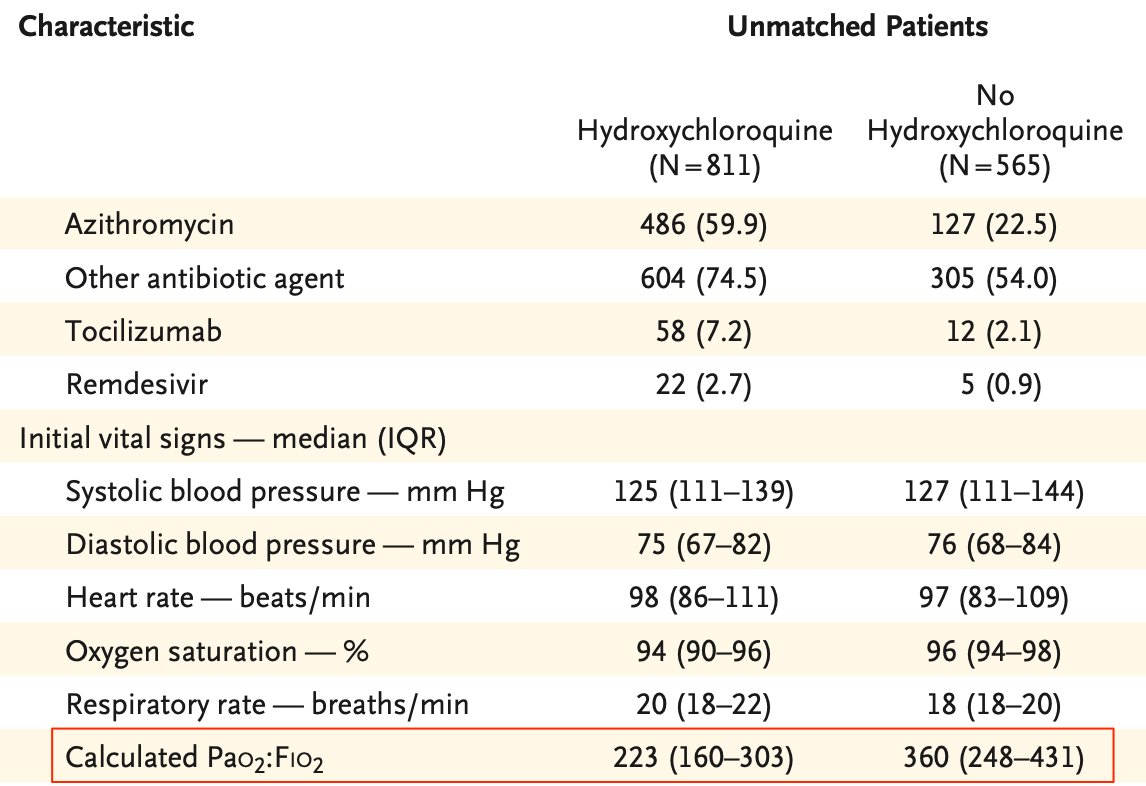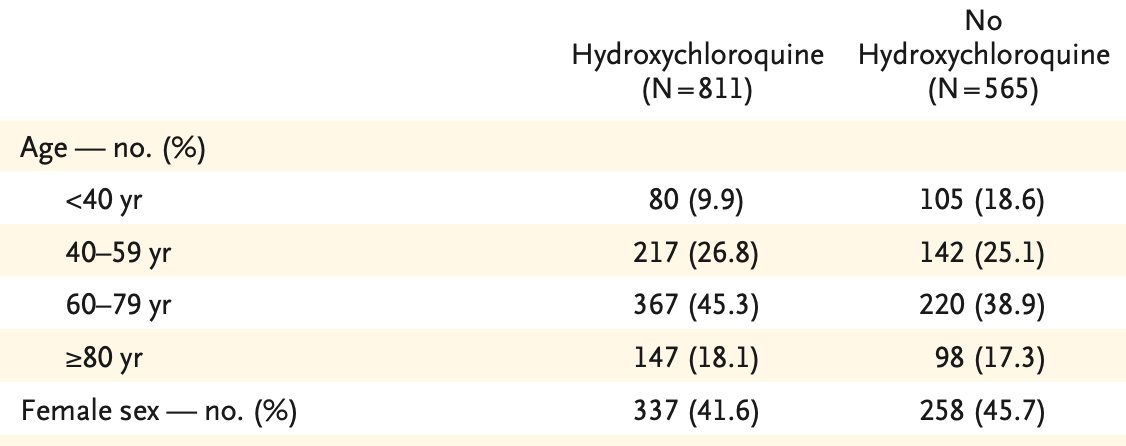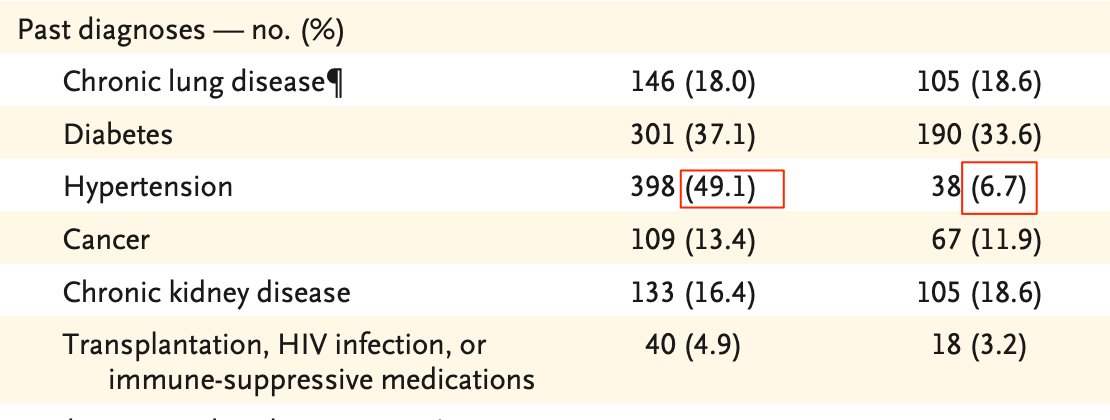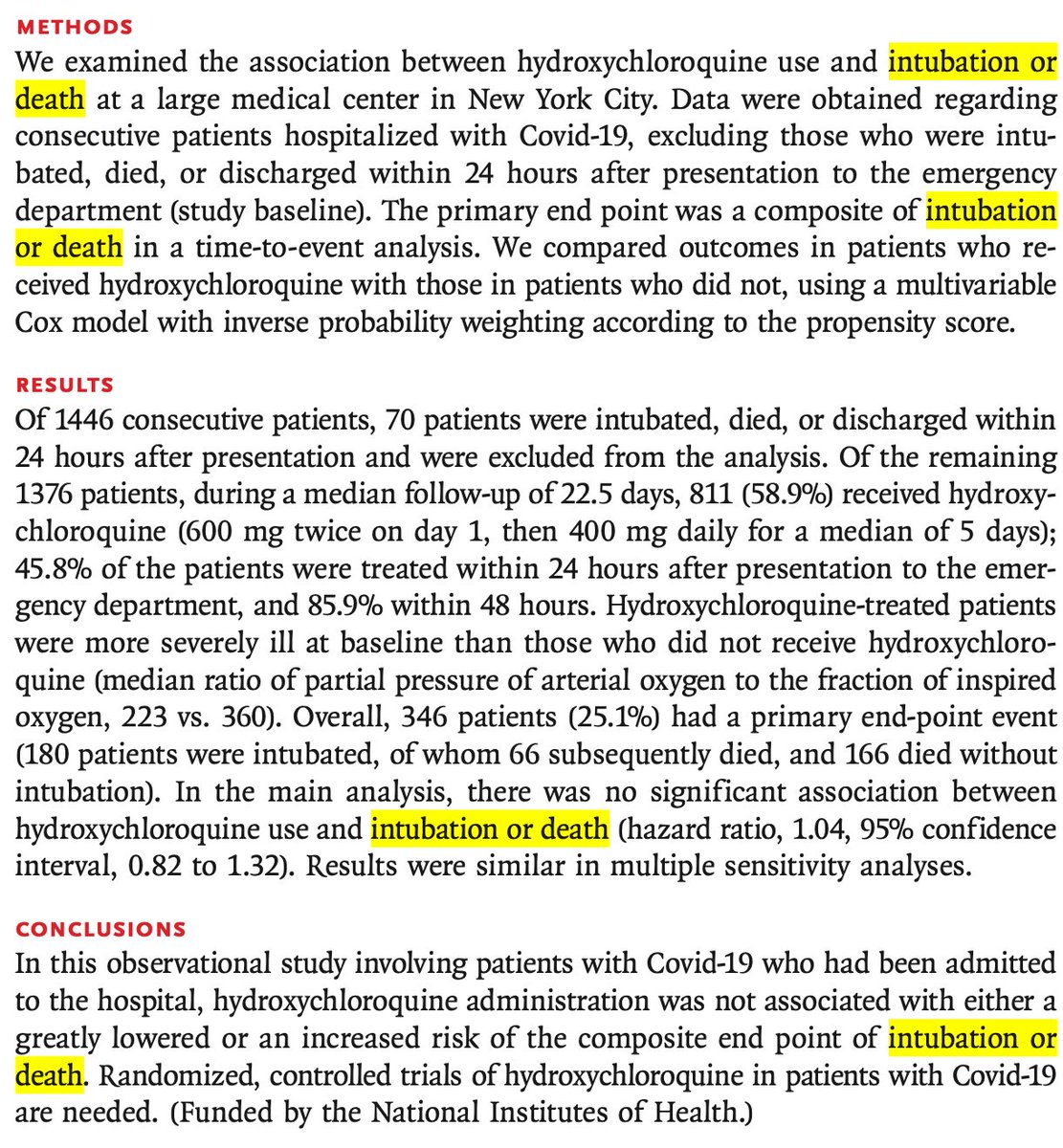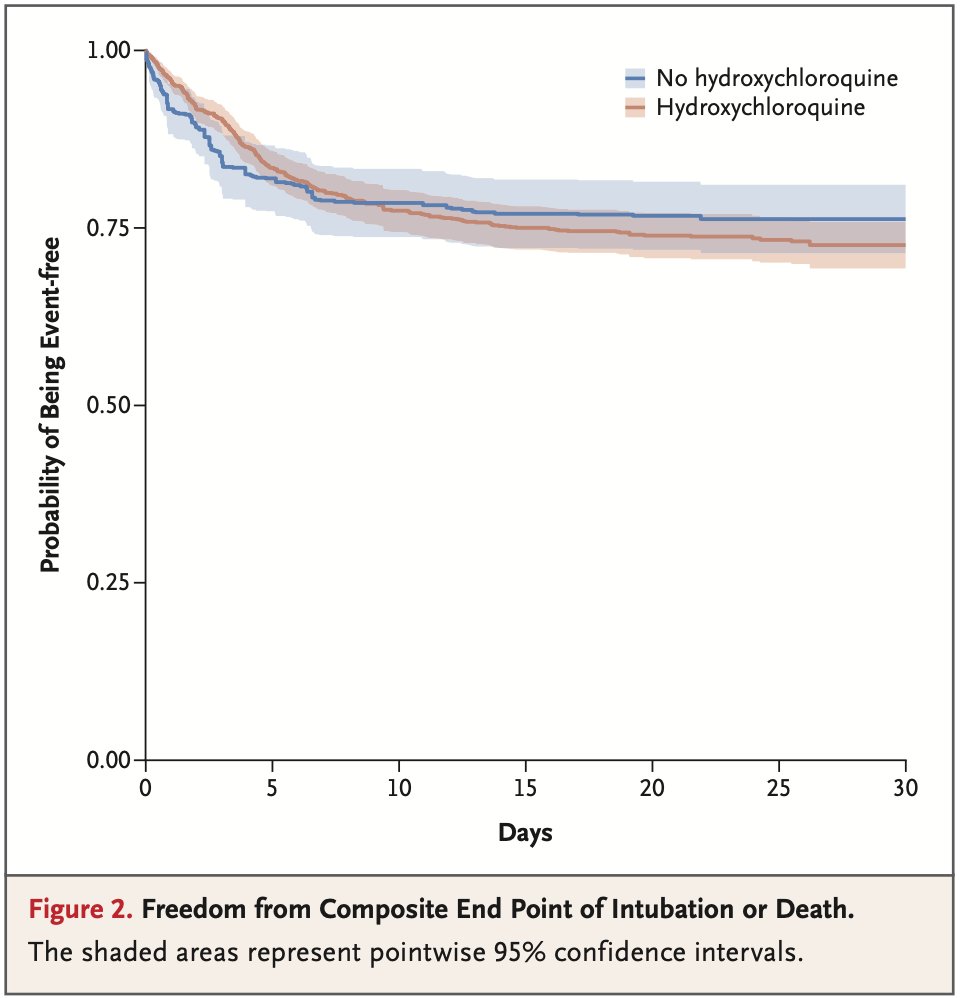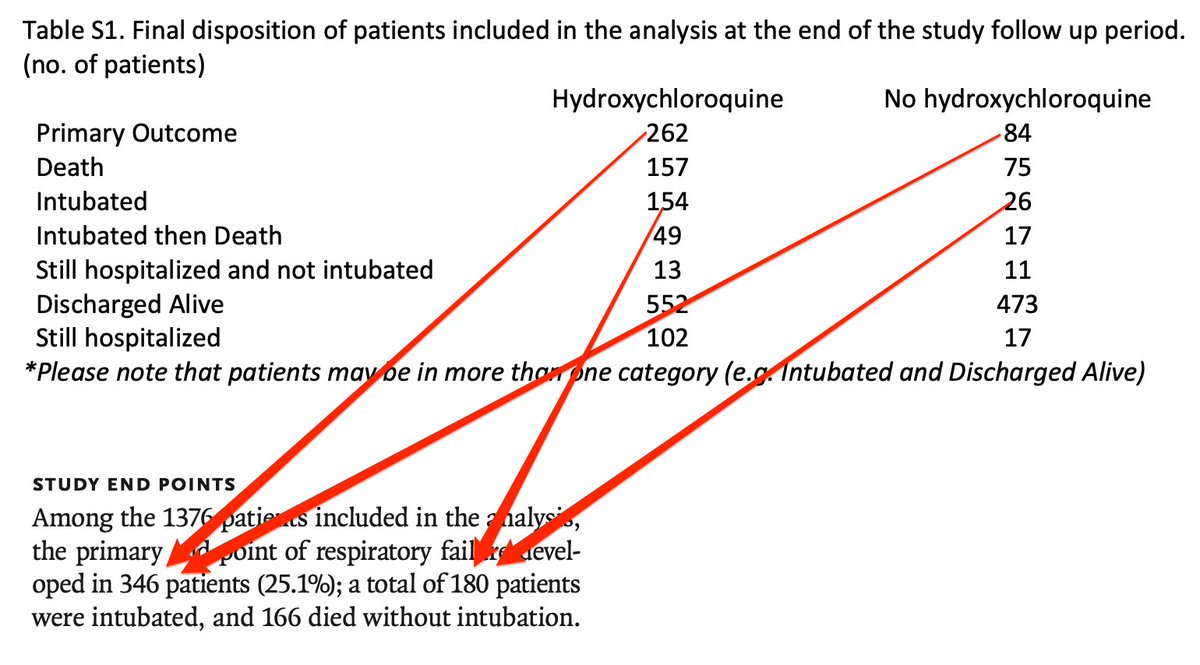Indeed, the patients from HCQ group were mostly already in a mild to moderate Acute Respiratory Distress Syndrome (ARDS) while the patients from the other group were not, as the PaO2/FiO2 shows:
Patients from the HCQ group are also much older, and males (who are more at risk) are more represented.
As @PaulSaxMD points out, in these conditions, it’s challenging to adjust the control group in order to do a proper comparison. https://twitter.com/PaulSaxMD/status/1258512980775297025">https://twitter.com/PaulSaxMD...
In order to nevertheless do so, the authors made use of several statistical tools and computed a smaller set (N=274 vs N=565) of “propensity-score-matched patients”, which is more comparable to the HCQ group:
So far, so good.
But now, here is the dirty trick. The authors decided to study the “intubation or death” endpoint, AS A WHOLE, which means the “intubation” event, *no matter whether the patient eventually survived* and the “death” event are considered equally.
But now, here is the dirty trick. The authors decided to study the “intubation or death” endpoint, AS A WHOLE, which means the “intubation” event, *no matter whether the patient eventually survived* and the “death” event are considered equally.
They call it a “composite endpoint”, but composite endpoints are known to be… touchy. https://www.the-scientist.com/lab-tools/composite-endpoints-in-clinical-trials-33259">https://www.the-scientist.com/lab-tools...
A rule of thumb is to usually “choose endpoints that are relatively similar in how clinically important they are to patients”, yet the authors of the NY study chose to conflate “intubation” and “death”.
(Do you prefer to be intubated but still alive, or dead?)
(Do you prefer to be intubated but still alive, or dead?)
Then, the study establishes that the “the risk of intubation or death was not significantly higher or lower among patients who received HCQ than among those who did not”.
Indeed, as the diagram shows, the “intubation or death” event occurs identically in both groups.
Indeed, as the diagram shows, the “intubation or death” event occurs identically in both groups.
But remember, it’s “Intubation OR Death”, as whole.
In order to break down this compound, we need to go to the appendix and take a look at Table S1.
The Primary Outcome shown here matches the study end-point.
In order to break down this compound, we need to go to the appendix and take a look at Table S1.
The Primary Outcome shown here matches the study end-point.
Since the key finding of the study is that the “Intubated or Death” primary outcome is independent from the group, it& #39;s perfectly legit to do the math and find out what “Death” actually represents (Death / Primary Outcome) in this composite.
And here are the (surprising?) results:
Death / Primary Outcome
HCQ: 157 / 262 = 60%
No-HCQ: 75/ 84 = 89% !
In other words, COVID patients who developed a respiratory failure in the NY hospital turned out to be 4 times more likely to survive when treated with HCQ!
Death / Primary Outcome
HCQ: 157 / 262 = 60%
No-HCQ: 75/ 84 = 89% !
In other words, COVID patients who developed a respiratory failure in the NY hospital turned out to be 4 times more likely to survive when treated with HCQ!
The authors decided to tout the study as a proof that “HCQ was not associated with either a greatly lowered or an increased risk of the composite end point of intubation or death“ which nearly everybody understands as “it does lower neither the risk or intubation nor the death”.
This is incredibly misleading.
Why did they choose to study that "composite" and not simply the mortality?
 https://abs.twimg.com/emoji/v2/... draggable="false" alt="🤷♂️" title="Man shrugging" aria-label="Emoji: Man shrugging">
https://abs.twimg.com/emoji/v2/... draggable="false" alt="🤷♂️" title="Man shrugging" aria-label="Emoji: Man shrugging">
Why did they choose to study that "composite" and not simply the mortality?

 Read on Twitter
Read on Twitter
